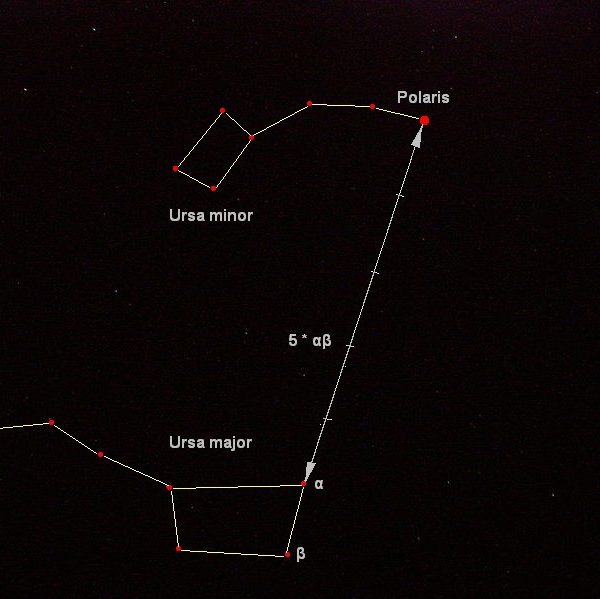
Seventh Sunday of Easter, Year B (5/13/2018)
Acts 1:15-17, 21-26
Psalm 1
1 John 5:9-13
John 17:6-19
Jesus is our Polaris, our North Star. Unity in Christ certainly does not mean uniformity or like-mindedness. Instead, unity means that followers of Christ share a focal point, a common guide who leads us by hope. Even when the way is fraught with peril, we look to the same heavenly sign, emboldening us to take the next step toward the abundant life he has promised for all the world.
Follow the drinking gourd,
Follow the drinking gourd,
For the old man is a-waitin’ for to carry you to freedom,
Follow the drinking gourd.
According to the well-loved folktale, this famous spiritual was more than what it seemed in the antebellum South. A legendary figure by the name of Peg Leg Joe reportedly spread the song to plantations across the South as a means of providing enslaved Africans with coded instructions for escaping along the Underground Railroad. The drinking gourd was a veiled reference to the asterism known as the Big Dipper. Two of the Big Dipper’s stars align with and point to Polaris, commonly called the North Star because it’s always a good approximation of true north in the night sky. To follow the drinking gourd, then, meant to rely on the Big Dipper in connection with Polaris as a point of reference. No matter where freedom seekers found themselves along the way, and in spite of the evil that stalked them around every corner, they could travel under the cover of night by the guidance of the stars.
Recent scholarship has challenged the historicity of the legend surrounding “Follow the Drinking Gourd.” Nevertheless, its power as a narrative of resistance and hope is indisputable. According to the story, the stars are much more than distant lights in the sky, beautiful but far removed from the exigencies of life on Earth. The stars represent nothing less than a source of hope and direction, a heavenly sign mapping the route to freedom and the possibility of a better life.
What does this image have to do with the life of discipleship? This past Thursday, the church commemorated the Ascension of our Lord. Luke concludes his Gospel with the story of Jesus’ promise to send the Holy Spirit on the disciples, his final blessing, and his sudden departure into heaven.[1] This account is puzzling in light of Jesus’ promise in Matthew to be “with [us] always, to the end of the age.”[2] So, which is it? Is Jesus “seated at the right hand of the Father” in heaven, as we affirm in the Apostle’s Creed, or is he closer to us than we are to ourselves, to paraphrase Saint Augustine[3]? Or, could it be that both are true?
This is the mystery of the incarnation, that the one who is with God in the beginning, who is God,[4] is the very one who takes on our fragile human life, with all its accompanying joy and grief. And, the one who shares our humanity is the very one who rises from shame and death to give us the hope of resurrection life, then returns to his rightful place in the company of God. The transcendent one becomes present to us; the present one transcends.
In our Gospel from John today, Jesus finds himself at the end of his earthly life, having washed his disciples’ feet and given them the great command to love. And, concluding his lengthy farewell to his friends, he prays for them. The prayer itself transcends time and space, as Jesus commends all his followers into God’s care, epitomizing trust in God and love for his own. “And now I am no longer in the world,” he prays, “but they are in the world, and I am coming to you. Holy Father, protect them in your name that you have given me, so that they may be one, as we are one.” If you’ve ever had the privilege of hearing someone pray aloud for you, you can begin to imagine what it feels like to hear Jesus pray for you[5] – a prayer that you have joy, that the truth set you free, that you be shielded from evil, that you be united with the whole company of disciples in every generation.
It’s profoundly sincere, but how do we hear Jesus’ prayer for unity given the church’s long history of internal conflict? That conflict is alive and well. I certainly don’t consider myself one with all other Christians, especially those, often the most vocal, whose message I believe deviates from the spirit of Jesus. Unity in Christ certainly does not mean uniformity or like-mindedness. If it did, then it would seem that Jesus’ prayer has never been answered.
No, our unity rests instead on something outside of ourselves. Unity means that followers of Christ share a focal point, a common guide who leads us by hope. Dear church, Jesus is our Polaris, our North Star.[6] By his ascension, he has been enthroned in heaven, like a beacon that shines in the night sky. Yet, he is much more than a distant light, beautiful but far removed from the exigencies of life on Earth. The transcendent one is present to us, his light marking the way through the shadows of our earthly pilgrimage. No matter where we find ourselves along the journey, and even when the way is fraught with peril, we look to the same heavenly sign. And, that sign emboldens us to take the next step toward the abundant life he has promised for all the world.
[1] Luke 24:49-52.
[2] Matthew 28:20.
[3] Confessions, 37.
[4] John 1:1.
[5] See Karoline Lewis, “Prayers Needed,” http://www.workingpreacher.org/craft.aspx?post=5147.
[6] https://members.sundaysandseasons.com/Home/TextsAndResources#resources.

